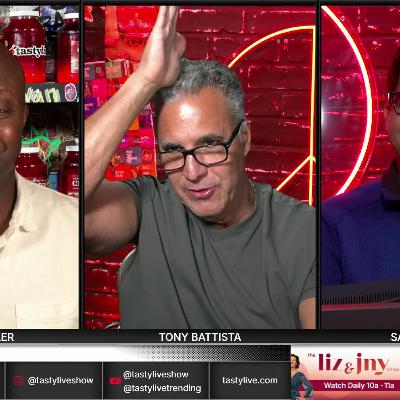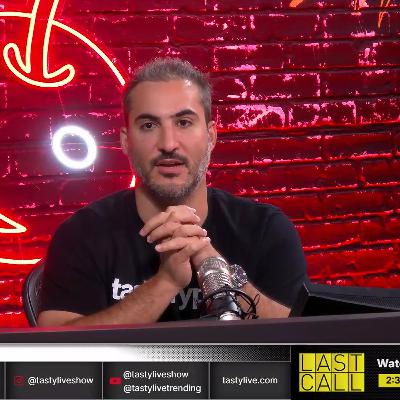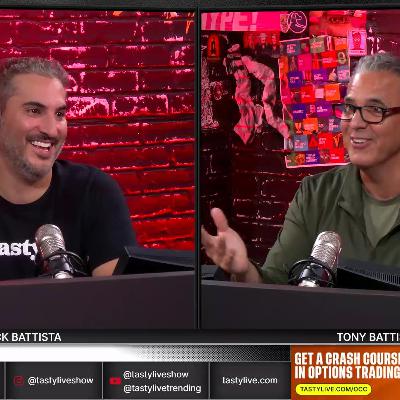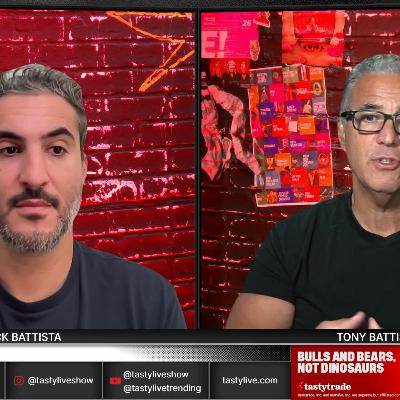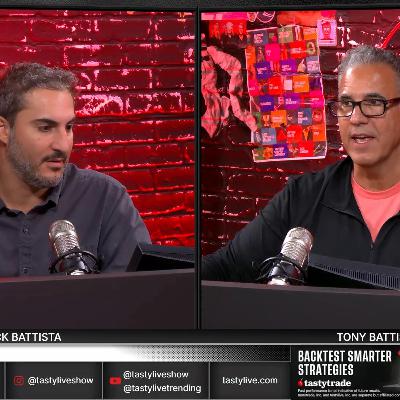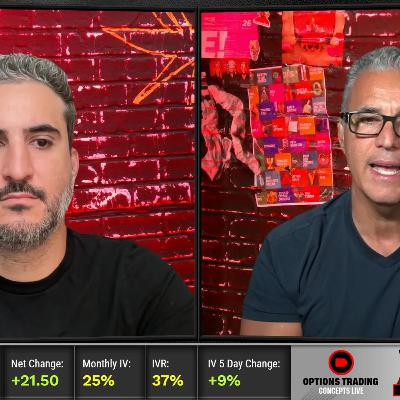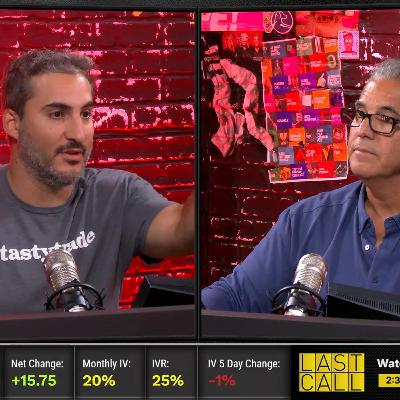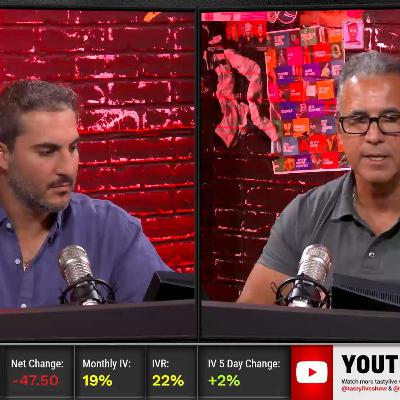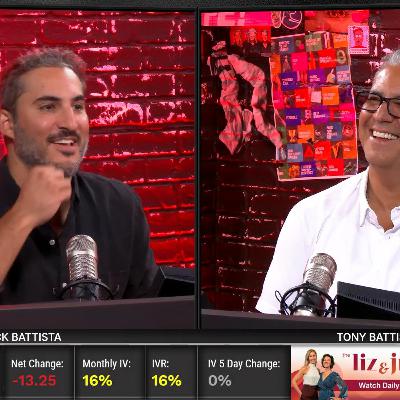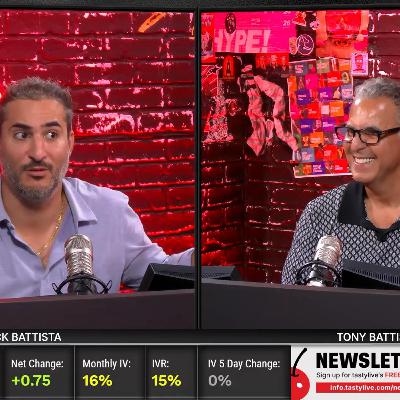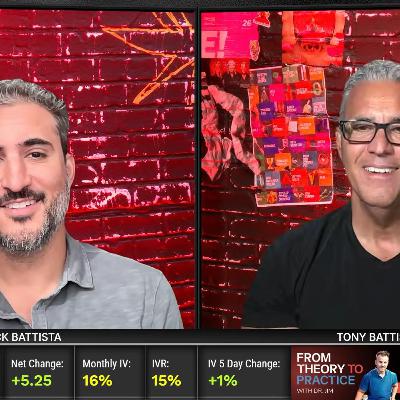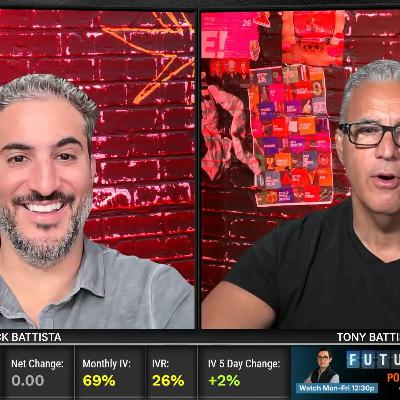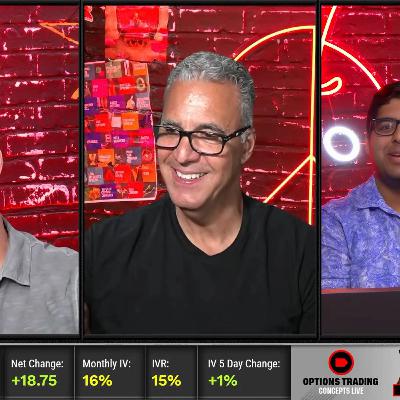Discover tastylive: Market Measures
tastylive: Market Measures

tastylive: Market Measures
Author: tastylive
Subscribed: 48Played: 3,343Subscribe
Share
© ℗ & © copyright 2013 - 2025 tastylive. All Rights Reserved.
Description
It's not always easy to take the measure of a market, whether you've been trading for a day or a decade. On this segment we look under the hood—options probabilities, volatility, trading strategies, futures, you name it—so your trading mechanics are built to manage more winners.
2255 Episodes
Reverse
In this half-hour segment, Sahil, from the Research Team discusses many current market trends and signals, particularly the evolving definitions of low implied volatility. He highlights that despite the S&P 500 reaching all-time highs, a significant number of stocks are underperforming, indicating a top-heavy market. The MAG-7 stocks, especially NVIDIA (NVDA) and Microsoft (MSFT), dominate market contributions, exacerbating this trend. Sahil also examines treasury yields and currency trends, suggesting that despite rising interest rates, market sentiment remains bullish, bolstered by strong earnings and hopes for rate cuts.
Recent data reveals the November to January trading period delivers better returns and higher win rates than the rest of the year, according to a tastylive Market Measure segment focused on "holiday euphoria."
The five-year study of S&P 500 ETF (SPY) examined 16-delta strangles across different volatility environments, finding win rates improved across all scenarios during the holiday window, with particularly strong performance during high implied volatility periods.
Risk metrics showed conditional value at risk decreased approximately 62% during the November-January window compared to non-holiday periods. While these patterns reflect recent market behavior with fewer sell-offs occurring during holiday periods, traders should view this as a probability tilt rather than a guarantee.
The analysis reinforces the importance of trade management, appropriate position sizing, and seeking high implied volatility opportunities regardless of season.
Analysis of SPY options data from 2015-2025 reveals selling 16-delta, 45-day strangles and managing at 21 days consistently outperforms holding 21-day options until expiration. The latter strategy increases tail risk by 34% with only minor profit improvements.
Higher implied volatility environments offer better risk-adjusted returns despite larger drawdowns. While average P&L doubles in high volatility, the conditional value at risk remains proportionally stable.
Holding options near expiration significantly widens P&L distribution. Though extrinsic value declines to zero at expiration (potentially accelerating profits), this period also presents the greatest loss potential.
For ETF short premium strategies, trading longer-duration options and managing early has proven superior over the past decade, creating a tighter, more manageable distribution of returns.
Market volatility has increased significantly in 2025, with daily price movements up 2.4x and percentage changes up 1.5x compared to 2015-2024. This has prompted traders to consider legging in and out of positions to capitalize on market swings.
Our research study analyzed SPY data over 10 years, comparing 45-day strangle strategies managed as whole positions versus managing each leg independently at 50% profit. Results show managing positions as a whole slightly outperformed the legging approach.
When legging out, traders should aim for 75-90% profit on the untested side rather than just 50%, as buying back options with substantial remaining value adds risk to the overall position. The study concludes that while legging can work in certain scenarios, it increases management complexity and directional risk exposure.
A market measure segment explored why volatility behavior doesn't directly correlate with price movement in equity markets. Using five years of S&P 500 (SPY) data, researchers demonstrated that implied volatility acts independently of price direction.
Key findings revealed the strongest correlation exists between volume and IV Rank (IVR) at 0.5, while price and volatility showed minimal connection. The scatter plot visualization confirmed volatility tends to contract fastest when both trading volume and IVR are elevated.
For traders, this means focusing on IV metrics rather than price movement when assessing market stress. Peak fear moments, characterized by surging IVR and volume, typically present optimal opportunities to fade volatility, despite feeling uncomfortable in the moment.
A market measure segment analyzed how volatility and trading volume interact in SPY over a five-year period. The research confirms that when implied volatility (IVR) spikes, trading volume typically increases, signaling genuine fear in markets.
The most significant finding: days with both high IVR and high volume create ideal short-volatility setups, as these conditions typically lead to rapid volatility contraction within 24-48 hours. This pattern creates what traders call "the juiciest short vol opportunities."
The study reinforces that crowd behavior drives the volatility cycle, once everyone reacts to market panic, there's no one left to sell, creating mean reversion. Low IVR periods offer minimal reward for volatility sellers due to limited expected movement.
The market measure segment analyzed stop-loss strategies for spread trades, examining data from SPY options over 10 years. Research showed trades without stop losses had the highest average P&L and win rates compared to various stop-loss thresholds. For traders needing protection, the 50-70% range offered the best balance between risk mitigation and profitability.
Rather than exiting positions completely, selling the untested side during adverse moves can reduce delta exposure by 30-50%, keeping traders in the game while managing risk.
In a data-rich market measure, analysis shows 2025 correlations between major assets are significantly higher than historic lows across the board. SPY and QQQ have reached "maxed out" correlation levels, suggesting unified market movement despite Friday's volatility.
Gold has returned to its classic hedge profile with near-zero or negative correlation to equities, while small caps closely track major indices, indicating broader risk-on participation. Tech sector cohesion remains strong but less extreme than during pandemic peaks in 2020-2022.
The research suggests traders should be mindful of correlations when constructing portfolios, potentially reducing position sizing during periods of unusually high correlation. Metals continue showing strength with silver up nearly 6%, while tech darlings like NVIDIA, Microsoft, and AI-related stocks post significant gains.
A 10-year market study reveals significant differences in price volatility between ETFs and individual stocks. ETFs like SPY, IWM, QQQ and DIA experience outlier moves (defined as twice the daily expected move) only 1.6-2.3% of the time, with SPY going up to 567 days without a significant outlier.
In contrast, individual stocks like Tesla, AMD, Palantir and Lululemon saw 81% more outlier events and spent 42% fewer days in calm periods compared to ETFs. Western Digital (WDC) showed the shortest period without outlier moves.
The data supports selling premium on ETFs during low volatility periods, while individual stocks may offer better opportunities when implied volatility is high. This explains the current popularity of 0DTE SPX trading strategies among premium sellers.
Recent research reveals that while S&P 500 futures meander slightly up ($2.75), 2025 has shown significantly more volatile weekend gaps than historical norms.
The study comparing 2015-2025 data indicates that 25% of down weeks started outside the one standard deviation range – far exceeding the expected 16%. This pattern suggests traders should prioritize position management before weekends.
Despite market volatility, Monday openings have been higher than Friday closes 51% of the time in 2025, slightly below the 10-year average of 56.3%. However, these weekend moves have shown greater downside risk.
For traders, this data emphasizes the importance of Friday portfolio rebalancing, especially for short-duration positions, to mitigate weekend exposure risk.
Overnight gaps in stock prices offer potential trading opportunities, but implied volatility levels significantly influence outcomes, according to a comprehensive market analysis. The study examined SPY movements from 2017 through 2025, comparing gap behavior across different volatility regimes.
In moderate volatility environments (IV 15-30), traders find the most consistent patterns, with 1-2% upward gaps continuing 70% of the time and downward gaps typically bouncing back. High volatility periods (IV 30-60) act as "reversal machines" where chasing big moves often proves counterproductive.
2025's market behavior has shown distinct patterns, with moderate downside moves providing buying opportunities while upside gaps during high volatility periods have been more suitable for fading. The key takeaway: assess implied volatility before developing a gap trading strategy, as identical price movements behave differently across volatility environments.
The tastylive research team shared several options trading strategies during their segment. Sahil recommended a Shopify strangle with 50 days to expiration, offering a $752 credit for $1,500 in buying power reduction, with strikes at $125 and $185 and an IVR of 40.
Kai suggested selling an Intel strangle, highlighting the significant call skew in the stock. He proposed using 16 delta puts and 25 delta calls, providing more upside protection.
Dr. Data presented a silver strangle strategy capitalizing on high call skew, with strikes at $40.50 for puts and $47 for calls, available for approximately $1.60 with silver trading around $42.91.
Additional ideas included an Adobe trade as the stock approached 52-week lows with relatively high volatility.


